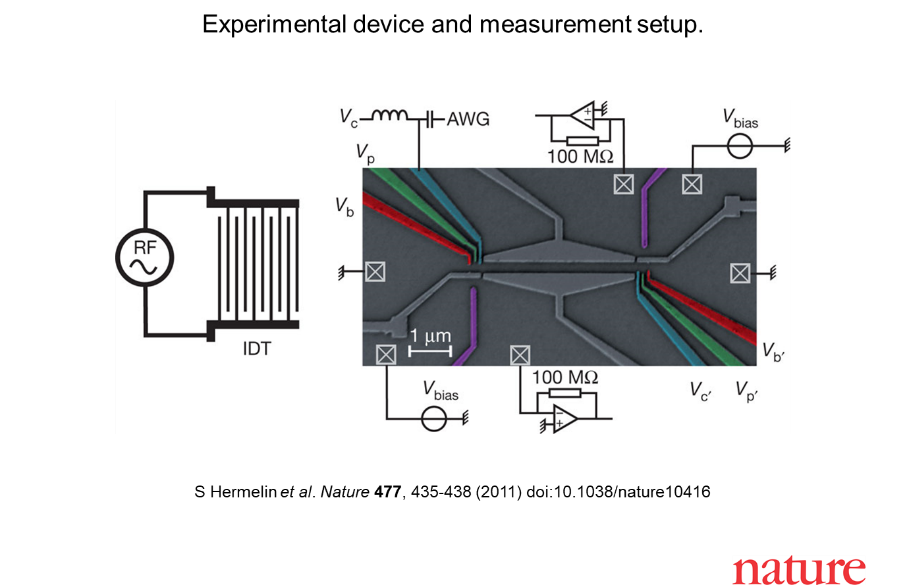

When I ask my quantum research customers what part of their project they’re most excited about, almost invariably they tell me it’s some unique element of their quantum chip.
But when the experiment is over, and the findings are published, was the chip the most challenging building block of their computer?
Not always.
In fact, after having gone through it all, many teams find that integration of the different layers of the quantum computer takes a bit more work than they expected -- and a lot more work than they wanted.
Time to Decide
A good chip alone doesn’t advance your research. You also need to be able to control the qubits reliably.
This is where some important decisions come into play:
- Make or buy?
- Unsophisticated or advanced?
- Performance or “cheap”?
It’s true. Hoping to stretch their research budgets, some teams are tempted to build in-house or to acquire average-grade instrumentation. Then again, the inherent risk in pursuing these avenues has more and more research teams opting for equipment that guarantees outcomes.
When it comes to synthesizing microwave pulses, I’ve noticed a worldwide trend towards leveraging high-performance, calibrated arbitrary waveform generators (AWGs) for quantum research.
During the last year, I’ve had a number of conversations with researchers working on exciting projects involving quantum applications. I was struck by the number of researchers that complimented Tektronix for the role our products played in advancing their research. So, I decided to do some unscientific research of my own, to see how customers had used our products. Querying Google Scholar, I discovered over 16,300 qubit papers were published in 2018 with over 224 mentioning an arbitrary waveform generator. Looking back further, Google Scholars listed over 182 that specifically mentioned a Tektronix AWG as part of their research project, that were published since 2011. Below is a small sample of these, the research teams and their exciting projects:
Autonomously stabilized entanglement between two superconducting quantum bits. S. Shankar, M. Hatridge, Z. Leghtas, K.M. Sliwa, A. Narla, U. Vool, S.M. Girvin, L. Frunzio, M. Mirrahimi, and M.H. Devoret, Nature 504, 419 (2013).
Cited by: 202
Electrons surfing on a sound wave as a platform for quantum optics with flying electrons. S. Hermelin, S. Takada, M. Yamamoto, S. Tarucha, A.D. Wieck, L. Saminadayar, C. Bäuerle, and T. Meunier, Nature 477, 435 (2011).
Cited by: 227
Deterministic delivery of remote entanglement on a quantum network. P.C. Humphreys, N. Kalb, J.P.J. Morits, R.N. Schouten, R.F.L. Vermeulen, D.J. Twitchen, M. Markham, and R. Hanson, Nature 562, (2018).
Cited by: 29
Room temperature high-fidelity holonomic single-qubit gate on a solid-state spin. S. Arroyo-Camejo, A. Lazariev, S.W. Hell, and G. Balasubramanian, Nature Communications 5, (2014).
Cited by: 91
A CMOS silicon spin qubit. R. Maurand, X. Jehl, D. Kotekar-Patil, A. Corna, H. Bohuslavskyi, R. Laviéville, L. Hutin, S. Barraud, M. Vinet, M. Sanquer, and S.D. Franceschi, Nature Communications 7, (2016).
Cited by: 109
Time-reversal symmetrization of spontaneous emission for quantum state transfer. S.J. Srinivasan, N.M. Sundaresan, D. Sadri, Y. Liu, J.M. Gambetta, T. Yu, S.M. Girvin, and A.A. Houck, Physical Review A 89, (2014).
Cited by: 37
Precise qubit control beyond the rotating wave approximation. J. Scheuer, X. Kong, R.S. Said, J. Chen, A. Kurz, L. Marseglia, J. Du, P.R. Hemmer, S. Montangero, T. Calarco, B. Naydenov, and F. Jelezko, New Journal of Physics 16, 093022 (2014).
Cited by: 39
No wonder so many great minds trust us.
My research customers already juggle so many distractions, there is no good reason they should also have to manage quality, repeatability, and reliability issues from their instrumentation.
While no one can guarantee a successful outcome to your experiment, at Tektronix, we assure our customers that, with the right signal source with excellent signal integrity and precise timing, they won’t be kept from focusing on the most exciting aspects of their project. Combined with an exceptional team of field engineers who excel at resolving complex technical issues, it’s no wonder so many great minds trust us. I invite you to learn more and join the growing list of researchers and authors who are forging the path of the future.
--------
The right signal source with excellent signal integrity allows researchers to focus on the most exciting aspects of their project.
--------
With Tektronix Arbitrary Waveform Generators (AWG), you get the peace of mind that comes with a precisely calibrated and pure signal from the microwave source. Our family of products generates pulses with:
- High sample rates
- Excellent vertical resolution
- Fast rise times
- Flexible and reliable signal generation software
- Automated closed-loop calibration
What hardware will you integrate with your quantum chip?
About the author: Chris Loberg is a director of product management at Tektronix. In this role, he manages the product life cycle, marketing, and business development of a wide range of performance instrumentation trusted by researchers and scientists worldwide.
Learn more by going to


